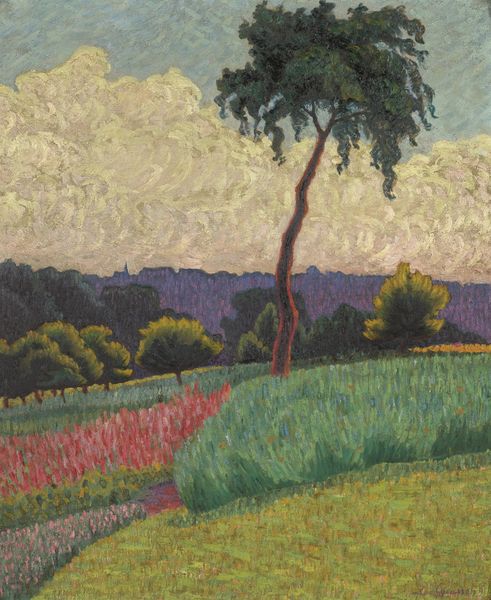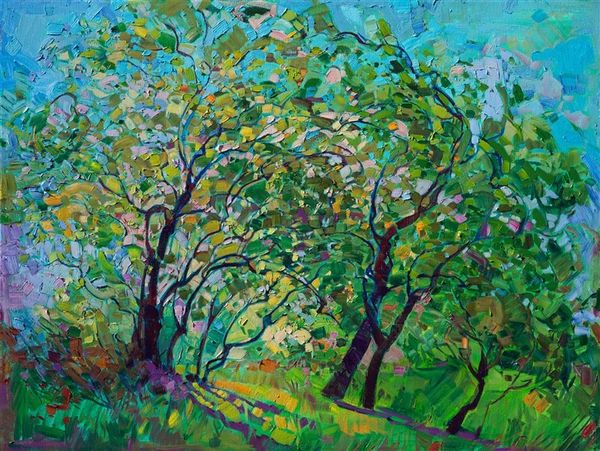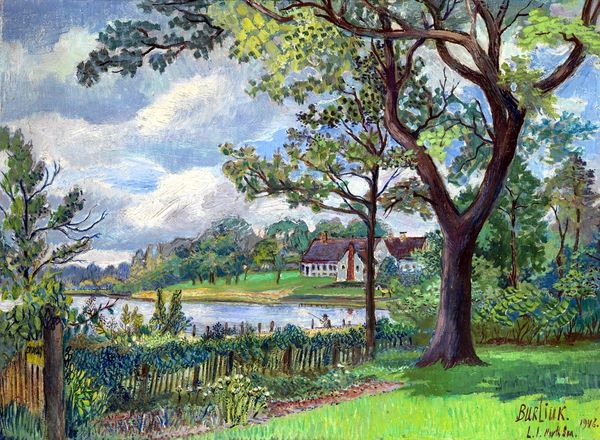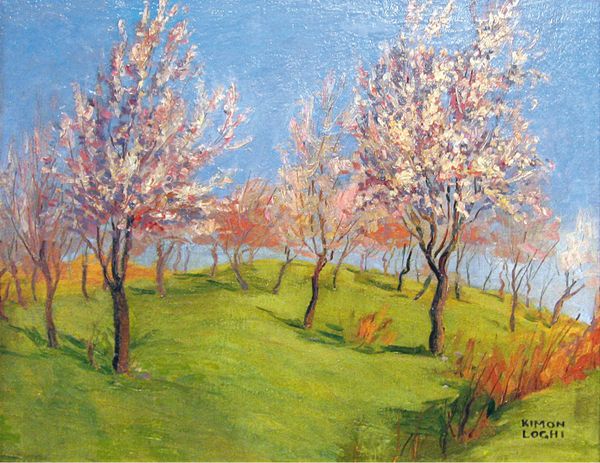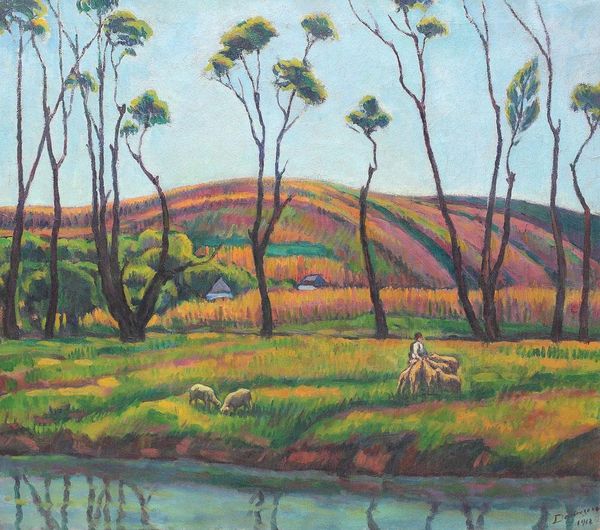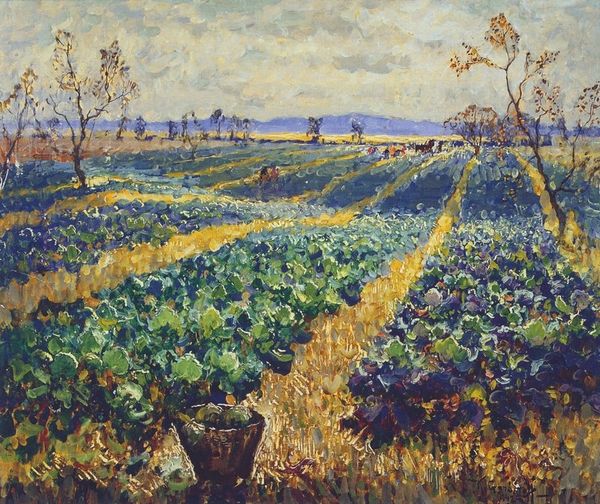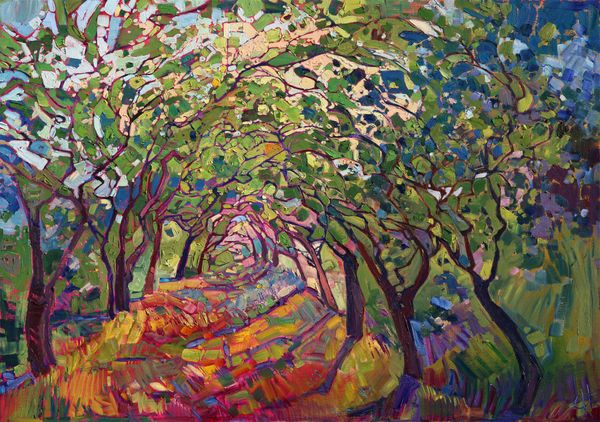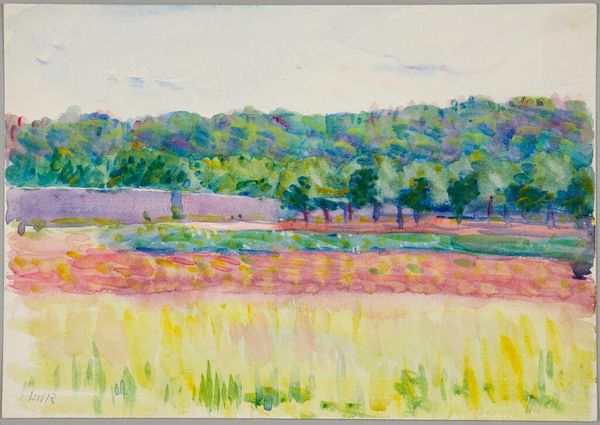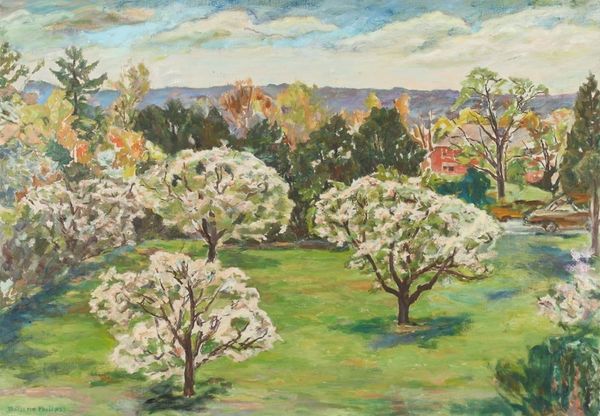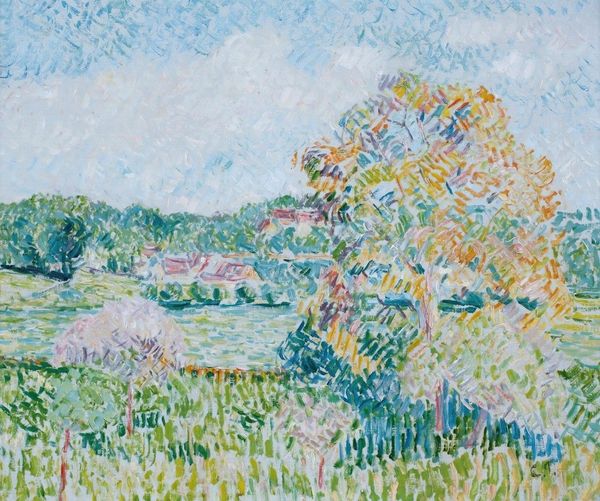
Copyright: Public domain US
Editor: This is "Field Work (Landscape from Grimaud)" painted by Nicolae Darascu in 1911, using oil paints, likely outdoors given its impressionistic feel. It feels so serene, with these farmers working near the sea...What do you see in it? Curator: Immediately, I am drawn to the figures laboring. Their bent postures resonate deeply; throughout art history, this symbol evokes not just physical toil, but also resilience, a deep connection to the earth. Consider how Millet used similar imagery—can you see how the symbolism overlaps here? Editor: I think I get that... the link to something bigger than themselves through hard work? Curator: Precisely. The Fauvist colors heighten this. The bright, almost unnatural hues transform an everyday scene into a symbolic meditation on humanity's place within the natural world. Does the contrast between the lively colours and the repetitive motions of labour make you think of other associations? Editor: Now that you point it out, maybe it hints at both the beauty and the hardship present at the same time... Curator: Yes, precisely! And think, too, of the sea in the background. The sea represents the continuity of the world, it symbolizes journey, a possibility but it also emphasizes the isolation of labour. In that time period in Romania, it’s charged. How does that context reframe what you initially saw? Editor: It really complicates things! I thought it was just a nice landscape at first. Now it has so much to say! Curator: Indeed! Art, especially works relying on visual symbolism, offer layer upon layer. Discovering each facet unveils its richness, don't you think?
Comments
No comments
Be the first to comment and join the conversation on the ultimate creative platform.

